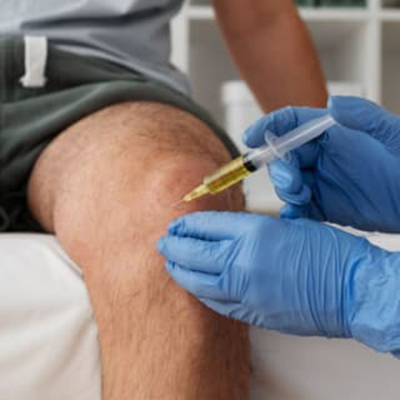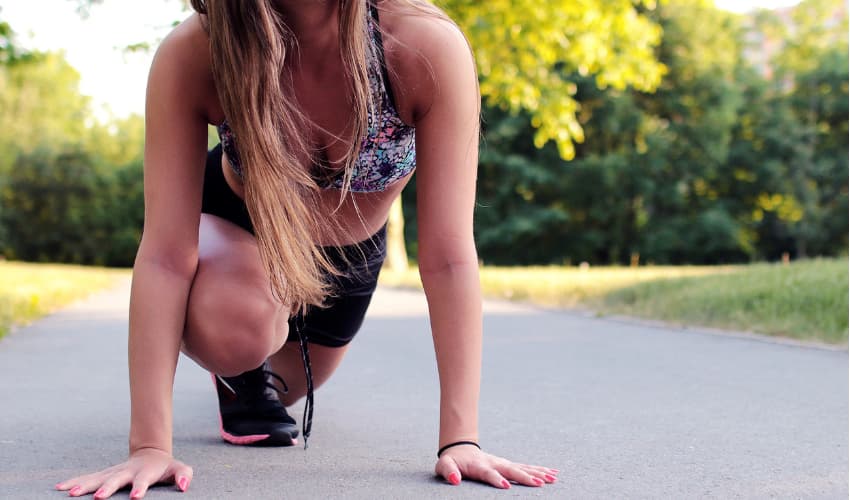- About our Clinic
- Men’s Health
- Testosterone Replacement Therapy
- Low Testosterone Test – Questionnaire
- Erectile Dysfunction Blood Test
- Online Erectile Function (IIEF-5) – Test
 Testosterone Replacement Therapy
Testosterone Replacement TherapyExplore options for restoring testosterone levels and enhancing vitality through tailored therapies.
 Low Testosterone Test – Questionnaire
Low Testosterone Test – QuestionnaireAssess your symptoms with a quick, confidential questionnaire to understand your testosterone levels.
 Erectile Dysfunction Blood Test
Erectile Dysfunction Blood TestFind out more about specialized blood tests designed to help diagnose erectile dysfunction.
 Online Erectile Function (IIEF-5) – Test
Online Erectile Function (IIEF-5) – TestTake the IIEF-5 test online to evaluate your erectile health and identify potential treatment paths.
- Fees
- Chiropractic
- Guided Injections
- Shockwave Therapy
 Plantar FasciitisDiscover effective treatments to relieve heel pain and inflammation caused by plantar fasciitis.
Plantar FasciitisDiscover effective treatments to relieve heel pain and inflammation caused by plantar fasciitis. Achilles Tendinopathy
Achilles TendinopathyLearn about specialized solutions for Achilles tendon pain to restore mobility and reduce discomfort.
 Calcific Tendonitis
Calcific TendonitisExplore advanced options to address calcium buildup in tendons and alleviate shoulder pain.
 Golfers Elbow
Golfers ElbowFind targeted and effective treatments to relieve inner elbow pain from overuse and strain.
 Tennis ElbowUnderstand therapies that target pain and inflammation from repetitive elbow movements.
Tennis ElbowUnderstand therapies that target pain and inflammation from repetitive elbow movements. - Contact Us
- Blog
Do You Need to Rest After a Cortisone Injection?
Do You Need to Rest After a Cortisone Injection?
Cortisone injections are widely regarded as one of the most effective treatments for joint pain. By reducing inflammation around the joint, they quickly alleviate pain and stiffness. In fact, studies suggest that over 80% of patients with knee pain return to sports within a month of receiving a cortisone injection.
Although cortisone injections provide fast relief, it’s important to rest for at least 24 hours afterwards. Taking it easy can help manage any pain or swelling in the treated area and prevent potential side effects.
We explain why resting after a cortisone injection is essential for recovery and how long you should rest depending on the area injected.

Table of Contents
- How Long Should You Rest After a Cortisone Injection?
- Why Do You Need to Rest After a Cortisone Injection?
- How Long Should You Rest Specific Joints After a Cortisone Injection?
- Is Walking Safe After a Cortisone Injection?
- Can You Drive After a Cortisone Injection?
- Do You Need Time Off Work After a Cortisone Injection?
- When Can You Return to the Gym After a Cortisone Injection?
- When Can You Start Running After a Cortisone Injection?
- Avoiding Side Effects After a Cortisone Injectionou Start Running After a Cortisone Injection?
How Long Should You Rest After a Cortisone Injection?
Rest is a crucial part of recovery following a cortisone injection. Most people are advised to rest for at least 24 hours post-injection. However, your specific recovery time may depend on your overall health and fitness. If you have additional medical conditions or are older, you might need more rest.
Additionally, the affected joint may require rest for up to seven days. This timeline will depend on any side effects you experience and your physiotherapist’s advice. For instance, if you received a cortisone injection for back pain, you may be able to resume gentle walking after a day. However, avoid high-impact activities like running for at least a week.
You may need to rest longer if:
- You experience side effects like swelling around the injection site.
- You have a condition that requires extra recovery time.
- You were given a high dose of cortisone or had injections in multiple joints.
Why Do You Need to Rest After a Cortisone Injection?
There are several reasons why resting after a cortisone injection is vital:
- Allow the steroid to work: Although cortisone injections offer rapid relief, the effect isn’t always immediate. Resting for a few days allows the medication to take full effect.
- Prevent systemic absorption: Resting helps keep the cortisone concentrated in the targeted area, ensuring the treatment is more effective and reducing the risk of it being absorbed into other tissues.
- Minimize the risk of cartilage damage: Overuse of the treated joint soon after the injection can increase the risk of cartilage damage, a side effect of steroid injections.
Once the cortisone has taken effect after a couple of days, you can gradually return to normal activities. If you were regularly active before the injection, start slowly and gradually work your way back up to your previous activity levels.
How Long Should You Rest Specific Joints After a Cortisone Injection?
The amount of rest you need varies depending on the joint that received the injection:
- Knee: Rest for at least 24-48 hours before resuming gentle walking. Avoid high-impact activities like running for about a week.
- Shoulder: While walking is generally fine, you should avoid lifting or straining your arms for about seven days.
- Hip: Limit all activities for about a week. After that, you can gradually return to activities like walking or swimming, but consult your physiotherapist before doing more strenuous exercises.
- Foot: Rest for 24-48 hours, avoiding excessive standing or walking. After this period, you can slowly resume light activities, with your physiotherapist’s guidance.
Is Walking Safe After a Cortisone Injection?
Yes, walking short distances is generally safe after a cortisone injection, especially if the injection wasn’t in your lower limb. However, if you had the injection in your knee, hip, or ankle, limit how much you walk for the first couple of days to allow the joint to rest.
If you had a cortisone injection in your wrist or elbow, walking won’t put strain on the treated area, so you can walk as much as you feel comfortable.
Can You Drive After a Cortisone Injection?
It’s best to avoid driving immediately after a cortisone injection if you feel drowsy, numb, or weak. These symptoms are usually short lived.
Do You Need Time Off Work After a Cortisone Injection?
While taking a day or two off work might be beneficial—especially if your job is physically demanding—most people don’t need extended time off. If your job allows you to rest the affected joint, you may not need to take time off at all.
When Can You Return to the Gym After a Cortisone Injection?
Your return to the gym depends on how you feel once the local anesthetic wears off and after your initial rest period. Most people can resume gym activities three to four days after a cortisone injection, but start by exercising muscles and joints that weren’t treated. Ease back into your workout routine and stop if you experience pain or discomfort.
When Can You Start Running After a Cortisone Injection?
If the injection was in your leg, hip, or back, avoid running for at least a week. This rest period allows the steroid to work and prevents overexertion of the joint. In the meantime, opt for low-impact activities like swimming or cross-training to stay active.
If the injection was in an upper limb, you may be able to resume running after two days of rest. Always consult with your physiotherapist for personalised advice.

Avoiding Side Effects After a Cortisone Injection
Side effects from cortisone injections are rare, but resting can reduce the chances of complications. Although you might be eager to get back to your normal activities, taking it easy for a few days can lead to better long-term results. After your rest period, you’ll likely be able to return to a more pain-free and active lifestyle. Ice packs anti inflammatory medication and gentle exercises the practitioner provided will also aid recovery and reduce side effects
AT A GLANCE
TREATS
Treats Tendons and Joints
ANAESTHESIA
DURATION
RECOVERY
48h of reduced activity
Safe and sustained pain relief
Minimal side effects
Fast pain relief
An effective pain relief option
MEET THE TEAM

Gary Edwards
Doctor of Chiropractic and Injection therapy
Book Your Consultation
To book you free consultation, please complete the form below. One of our practitioners will contact you to discuss your condition and schedule your appointment.















